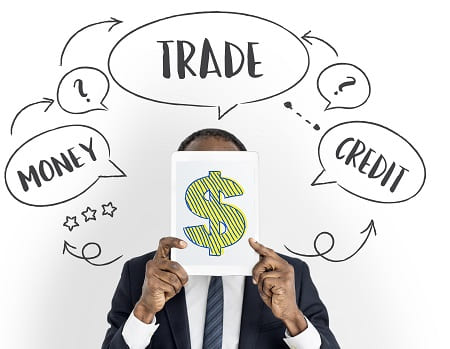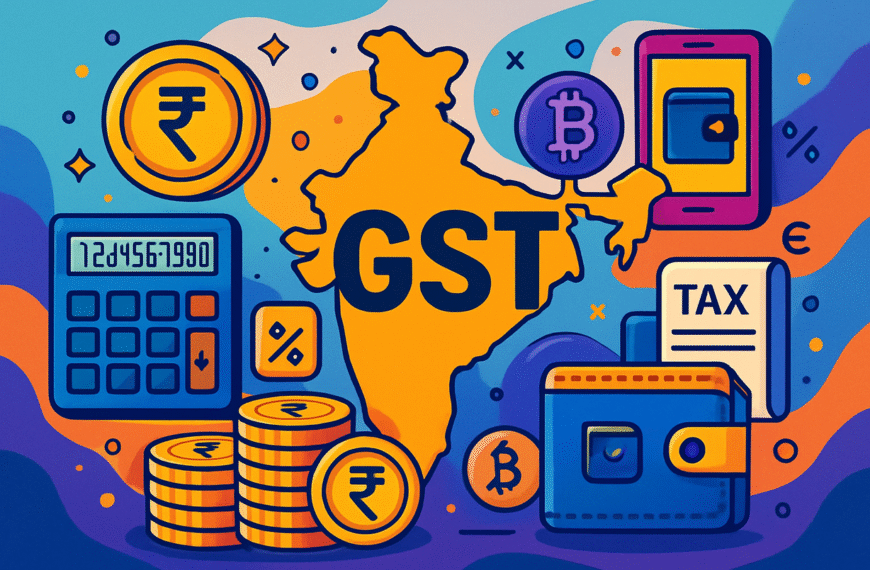What are tariffs?
A government-imposed tax on goods imported from another nation is known as a tariff. The importer pays the domestic government these taxes, which are also referred to as duties. Customers frequently pay more for imported goods as a result of the tariff.
The main goals of tariffs
Tariffs are used by governments for a number of reasons, such as:
Protecting Domestic Industries: Tariffs raise the cost of imported goods, which increases the competitiveness of domestically made goods. By doing this, local industries may be protected from overseas competition.
Creating Government Revenue: Particularly in developing countries, tariffs can be a substantial source of funding for a government.
Political and Diplomatic Instruments: Tariffs can be applied as an economic sanction or as a negotiating chip in trade talks.
Who is required tariffs?
- Who imposes the tariff? The government of the country that is importing the goods. For example, if the United States imposes a tariff on steel from another country, the U.S. government sets that tariff. This is typically done through a national customs authority, like the U.S. Customs and Border Protection.
- Who pays the tariff? The business or individual that is importing the goods into the country. They are responsible for paying the tariff to the importing country’s government.
- Who ultimately bears the cost? While the importer is the one who legally pays the tax, the economic burden is often passed on, at least partially, to others. The cost of a tariff can be absorbed by:
- The consumer: The importer may raise the price of the product to cover the cost of the tariff, making the final good more expensive for consumers.
- The foreign exporter: The foreign company selling the goods might agree to lower its prices to help the importer absorb the tariff, thereby maintaining a competitive price in the importing country’s market.
- The importer itself: The importing company might choose to absorb the cost of the tariff, accepting lower profit margins to keep prices stable and not lose customers.
How is required tariffs?
The requirements and practical applications of tariffs are as follows:
Government Policy
A government decides to impose a tariff on specific imported goods through the legislative and executive branches. This could be done for a number of reasons, including boosting income, defending homegrown industries, or using it as leverage in trade talks. The government will create a tariff schedule that details the tariff rate for various categories of goods, similar to the Harmonized Tariff Schedule (HTS) in the United States.
Case study on tariffs?
Case Study 1: The 2018–2020 US–China Trade War
Context:
Under the Trump administration, the US launched a trade war in 2018 by levying a number of tariffs on Chinese goods valued at billions of dollars. Addressing what the United States viewed as unfair trade practices, intellectual property theft, and a significant trade deficit were the stated objectives. China retaliated by imposing tariffs of its own on American goods, especially agricultural products like soybeans.
Principal Effects:
Tariffs on imported goods, ranging from furniture and electronics to industrial components, resulted in higher prices for American consumers and higher expenses for American companies that depended on Chinese components for production. Research revealed that almost all of the tariffs’ costs were transferred to

White paper on tariffs?
Executive Summary of White Paper:
The Economic and Strategic Consequences of Tariffs in the Twenty-First Century
As a trade policy instrument, tariffs have become a prominent aspect of the world economy once again. Their modern use has expanded to include geopolitical leverage, national security concerns, and efforts to address trade imbalances. Historically, they were employed to protect emerging industries and generate revenue. Although supporters contend that tariffs can protect domestic jobs, increase local production, and offer a negotiating tool, a growing corpus of economic research and recent case studies indicate that the actual results are frequently more nuanced and full of unforeseen consequences. The theoretical foundations of tariffs, their direct and indirect effects, and the strategic risks connected to their application in a
Tariffs on India
In August 2025, the U.S. under President Donald Trump announced new and significant tariffs on goods from India. The stated reason for these tariffs is India’s continued purchase of Russian crude oil.
- Tariff Rate: An additional 25% tariff was imposed on a broad range of Indian goods, bringing the combined tariff rate to 50% for many products. This is in addition to the initial 25% tariff that was already in effect.
- Reasoning: The U.S. government cited India’s oil trade with Russia as a national security concern, arguing that it helps fund Russia’s military actions.
- Impact: This move is expected to have a significant impact on India’s exports to the U.S., particularly in sectors like textiles, gems and jewelry, and seafood. It could also lead to a drop in India’s GDP growth.
Tariffs on China
The U.S. continues to maintain and, in some cases, increase tariffs on goods from China, a policy that began with the Trump administration and was largely continued by the Biden administration.
- Continuation of Existing Tariffs: The U.S. has maintained many of the “Section 301” tariffs that were first imposed in 2018.
- New Tariffs on Key Sectors: In recent years, the U.S. has announced new or increased tariffs on Chinese imports in strategic sectors, including:
- Electric Vehicles (EVs): The tariff on Chinese-made EVs has been increased to 100%.
- Solar Panels and Batteries: Tariffs on these products have been increased, reflecting a push to protect and grow domestic clean energy industries.
- Semiconductors: The tariff on semiconductors has been increased, with the stated goal of boosting U.S. chip manufacturing.
- Steel and Aluminum: Tariffs on these products have also been raised.
- Reasoning: The U.S. justifies these tariffs by citing what it considers to be China’s unfair trade practices, including intellectual property theft, forced technology transfers, and government subsidies that lead to overcapacity in certain industries.
Which goods were subject to these tariffs?
Products from India
The recent U.S. tariffs on Indian goods, imposed due to India’s continued purchase of Russian oil, have a broad impact on a variety of sectors. The new 25% tariff, which brings the total tariff rate to 50% for many products, affects a significant portion of India’s exports to the U.S.
Key affected products and sectors include:
- Textiles and Clothing: This is a major export sector for India, and the tariffs are expected to be a significant blow to the industry.
- Gems and Jewelry: The gems and jewelry sector, which includes diamonds and gold products, is another key export that will face much higher duties.
- Seafood: Shrimp exports, in particular, will be severely impacted, as the U.S. is a major market for Indian seafood.
- Leather and Footwear: These products are also subject to the increased tariffs.
- Chemicals: Organic chemicals will attract higher duties.
- Electrical and Mechanical Machinery: This category of goods will also face a substantial tariff increase.
- Auto Parts: While India does not export many finished vehicles to the U.S., a significant amount of auto parts are exported and will be affected.
- Steel, Aluminum, and Copper: These metals are subject to an additional 50% tariff.
Sectors that are reportedly exempt from these new tariffs include:
- Pharmaceuticals (finished drugs, APIs, etc.)
- Energy products (crude oil, natural gas, etc.)
- Critical minerals
- Electronics (computers, smartphones, integrated circuits, semiconductors, etc.)
Key products and sectors affected include:
- Electric Vehicles (EVs): The tariff on Chinese-made EVs has been increased to a very high rate, up to 100%.
- Semiconductors and Computer Chips: President Trump has announced a 100% tariff on imported semiconductors. However, companies that are building or have committed to building manufacturing facilities in the U.S. will be exempt. This is a move designed to incentivize domestic production.
- Solar Panels and Batteries: Tariffs on these products have been increased, with the goal of protecting and growing the U.S. clean energy industry.
- Steel and Aluminum: Existing tariffs on these products have been raised.
Why the 50% Tariff?
The U.S. government, under President Donald Trump, announced a new 25% tariff on a broad range of Indian goods. This new tariff was added to an existing 25% tariff, bringing the total duty to 50% for many products.
The primary reason cited for this action is India’s continued purchase of crude oil from Russia. The U.S. government views this trade as a national security concern, arguing that it helps fund Russia’s military actions.
Products Affected by the 50% Tariff
This tariff has a significant impact on many of India’s key export sectors to the U.S. The new duties make these products much more expensive for American importers and consumers. The key affected products and industries include:
- Textiles and Clothing: A major export industry for India, this sector is expected to be hit hard.
- Gems and Jewelry: Exports of diamonds and gold products now face much higher duties.
- Seafood: Particularly shrimp, where the U.S. is a critical market for Indian exporters.
- Leather and Footwear: These products are also subject to the increased tariffs.
- Auto Parts: The export of automotive components to the U.S. will be significantly affected.
- Metals: Steel, aluminum, and copper products also attract the additional 50% tariff.
Products Exempt from the New Tariffs
Some key sectors were reportedly exempt from these new tariffs, including:
- Pharmaceuticals: Finished drugs and other medical products.
- Energy Products: Crude oil and natural gas.
- Electronics: Computers, smartphones, and semiconductors.
Economic Impact on India
This move is expected to have a notable impact on India’s economy, potentially leading to a drop in its GDP growth. Indian exporters will face significant challenges in a major market, and it could also lead to a decline in foreign currency reserves.

















